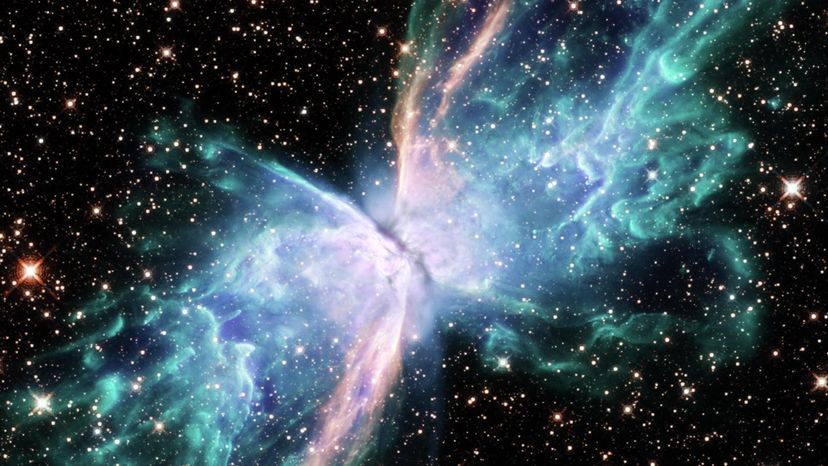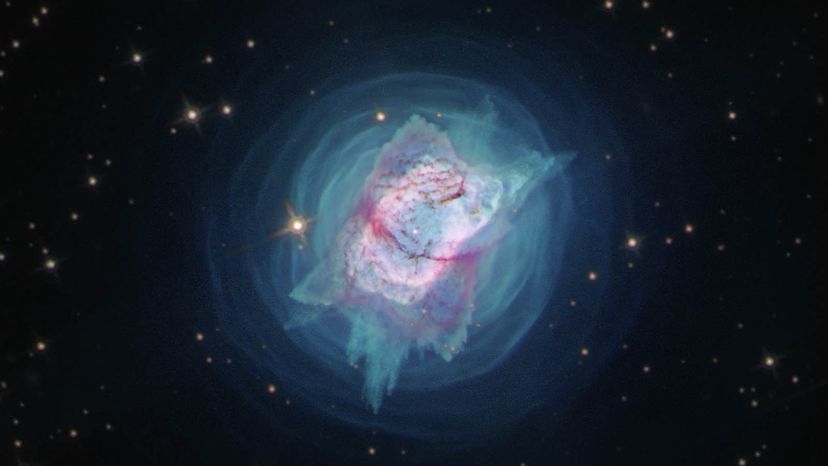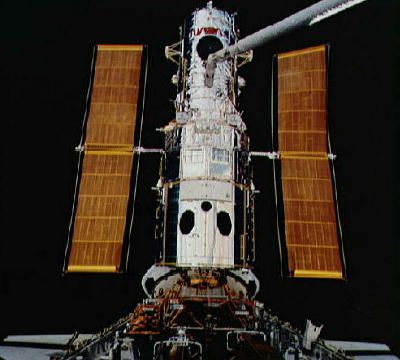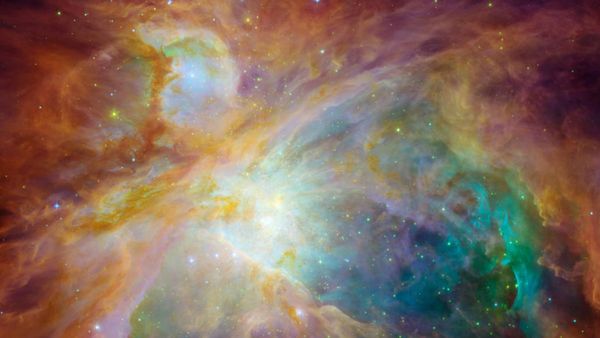
The Hubble Space Telescope just celebrated its 30th year of revealing stunning scenes and mind-blowing photography from space. And NASA just released more images from Hubble of two young planetary nebulas, which are expanding shells of gas created by dying stars shedding their outer layers. The images provide new insight into the chaos stars can undergo at the end of their lives.
The multi-wavelength images, which were captured by Hubble's Wide Field Camera 3, have astronomers hypothesizing that the Butterfly Nebula (NGC 6302) and one resembling a colorful jewel bug (NGC 7027) are binary-star systems. And the images have allowed astronomers to see how both systerms are splitting themselves apart at a fast space — at least in space time.
Advertisement
Joel Kastner of Rochester Institute of Technology, Rochester, New York, led the study, in which researchers traced the nebulae's histories of shock waves. The findings have led them to suspect that two stars are — or were — circling each other at the center of each nebula, which accounts for the cinched appearance in the center. The recent changes in output could even be evidence of a star merging with its companion star.
"When I looked in the Hubble archive and realized no one had observed these nebulas with Hubble's Wide Field Camera 3 across its full wavelength range, I was floored," Kastner said in a press statement. "These new multi-wavelength Hubble observations provide the most comprehensive view to date of both of these spectacular nebulas. As I was downloading the resulting images, I felt like a kid in a candy store."
Astronomers theorize that a two-star nebula can form when a mass-losing star is one of two in a binary system, according to NASA. As they interact, they form a gas disk, which becomes the source of the outflowing material. In this case that would be the wings of the butterfly or the shape of the jewel bug.

When the smaller star merges with the other, "jets of material" can flow out and wobble, which is what researchers think is happening with the Butterfly Nebula. The way iron emissions — gas blown out at high speed by a star and captured by the Hubble camera filter — show up along opposing, off-center directions, implies that the source is wobbling over time, "like a spinning top that's about to fall," Kastner explains. "That's another telltale sign of the presence of a disk, which directs the flow, and also a binary companion."
As for the "jewel bug," it had been "slowly puffing away its mass" for centuries in a regular spherical pattern until it recently produced a new cloverleaf pattern. Kastner said that something "went haywire" at the center. Based on its iron emission pattern, researchers think its red giant star swallowed its companion.
"The suspected companion stars in NGC 6302 and NGC 7027 haven't been directly detected because they are next to, or perhaps have already been swallowed by, larger red giant stars, a type of star that is hundreds to thousands of times brighter than the sun," said team member Bruce Balick of the University of Washington in Seattle in the press statement. "The hypothesis of merging stars seems the best and simplest explanation for the features seen in the most active and symmetric planetary nebulas. It's a powerful unifying concept, so far without rival."
Advertisement

